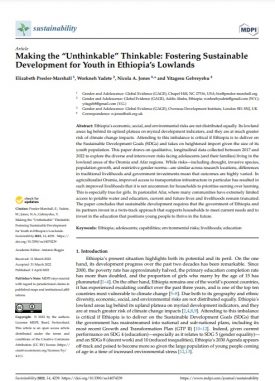Drawing on qualitative research undertaken in mid-2021, this article explores how limited integration of environmental, economic, and social aspects has affected the development of Rohingya refugee adolescents who were forcibly displaced from Myanmar to the Cox’s Bazar district of Bangladesh. Cox’s Bazar is one of the most climate-vulnerable areas in Bangladesh and is subject to extreme rainfall, landslides, and flash floods.
The article highlights the ways in which Rohingya adolescents are highly vulnerable to both the direct and indirect consequences of these environmental conditions due to poverty, and inadequate housing infrastructure and water, sanitation, and hygiene facilities. It discusses the ways in which these environmental challenges intersect with socioeconomic disadvantage, especially limited education, skills development, and livelihood opportunities for young people, which are in turn compounded by limited voice and agency, and a dearth of security and protection measures.
Suggested citation:
Mitu, K., Jones, N., Vintges, J. and Devonald, M. (2022) ‘Climate Risks and Truncated Opportunities: How Do Environmental Challenges Intersect with Economic and Social Disadvantages for Rohingya Adolescents in Bangladesh?’ Sustainability 14(8) (https://doi.org/10.3390/su14084466)
